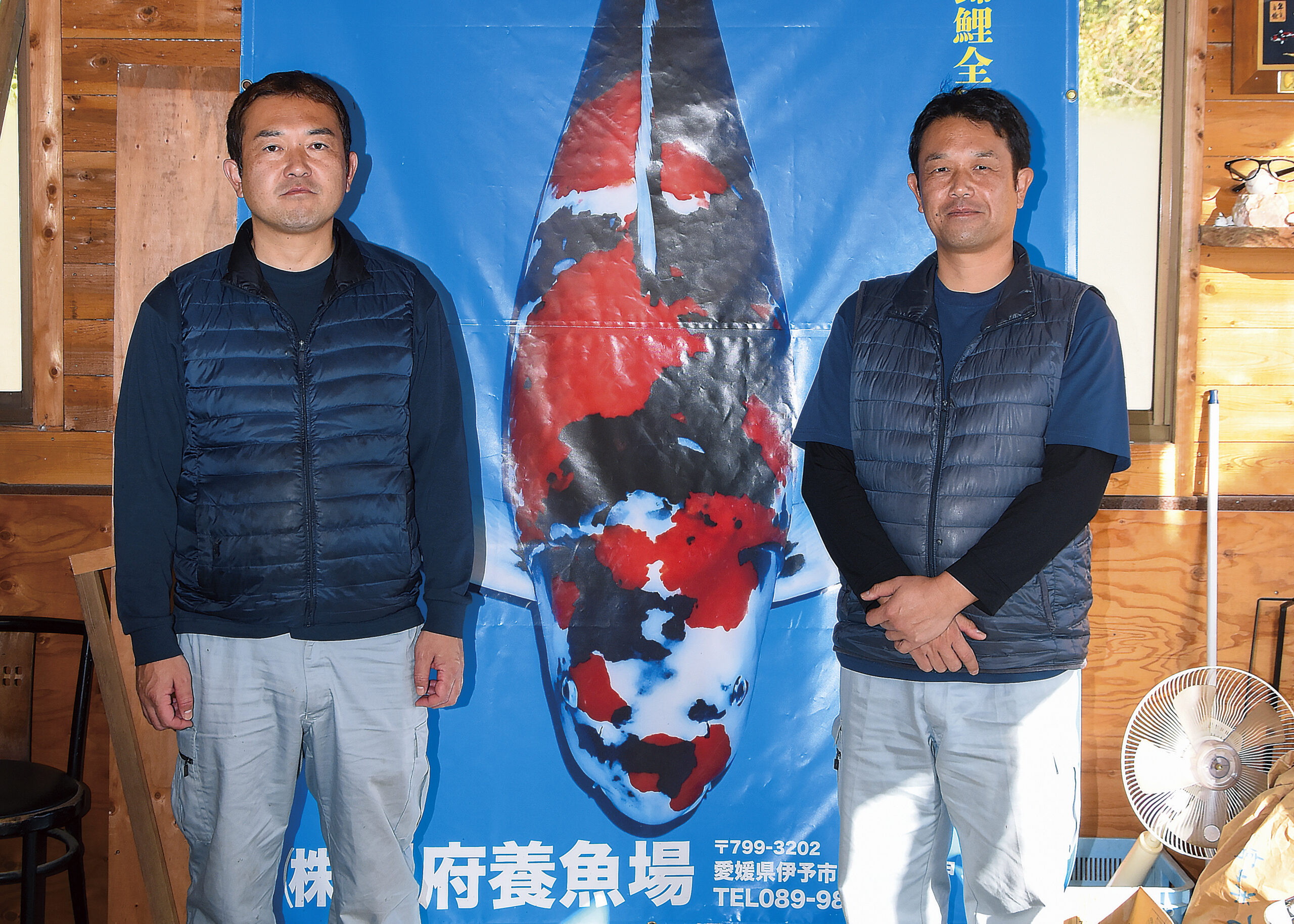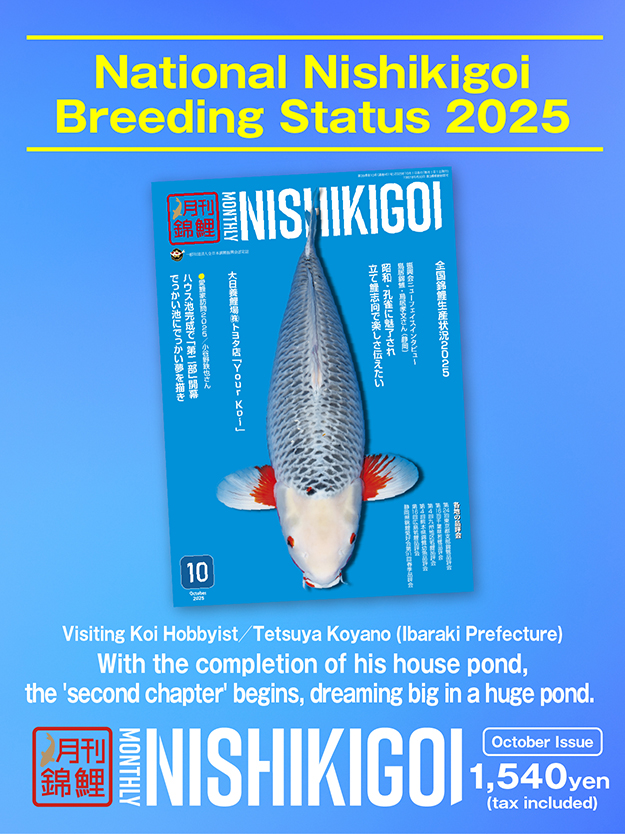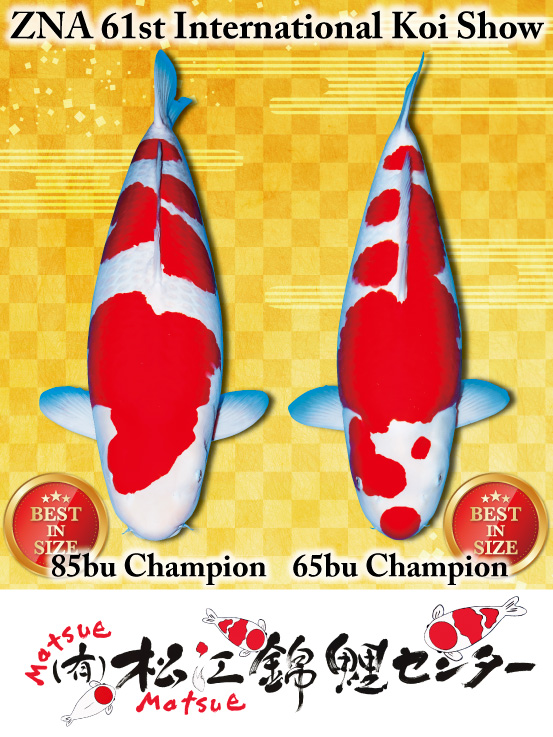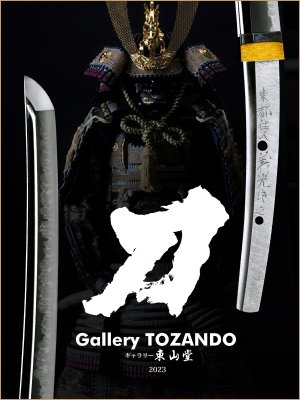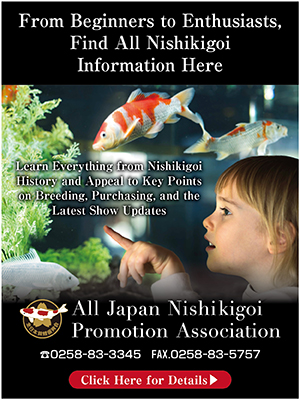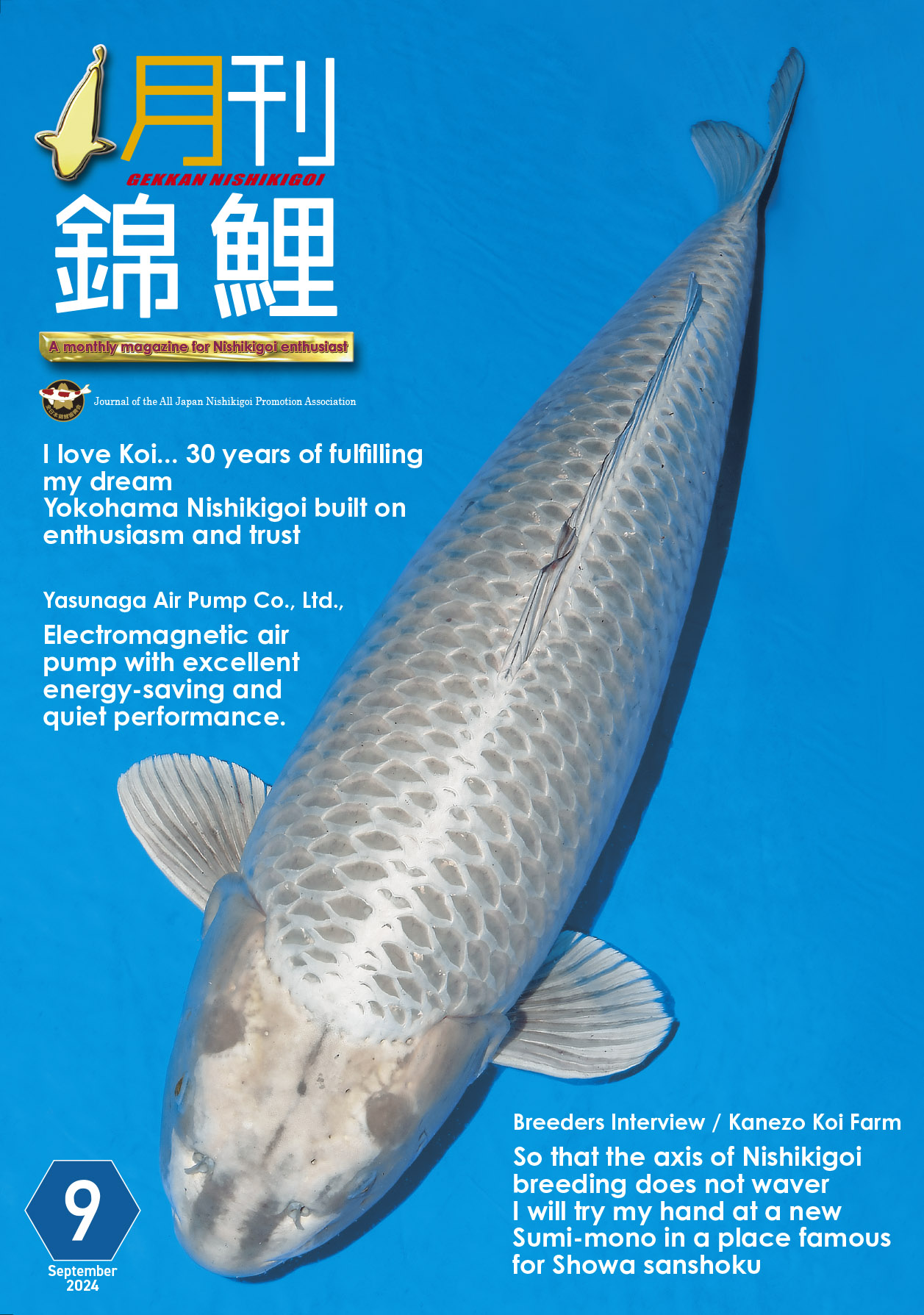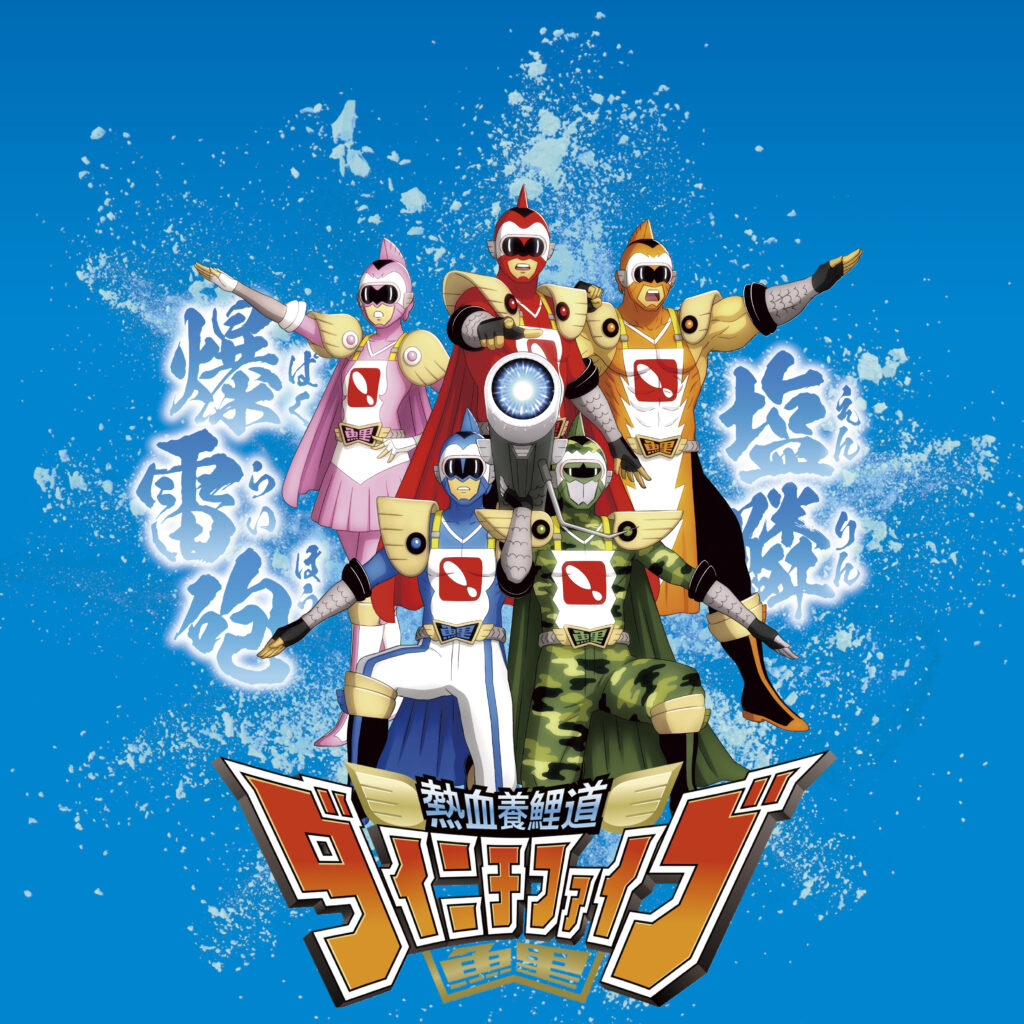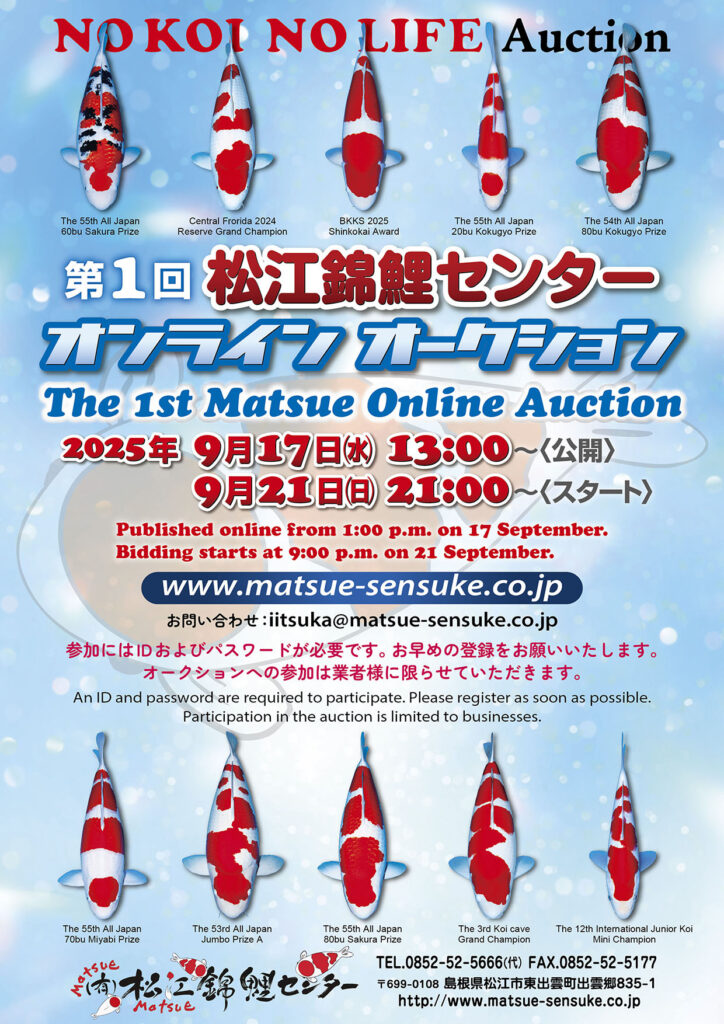Focus on Taisho Sanshoku, with Kohaku and Showa Sanshoku.
Ginrin Taisho Sanshoku receiving high praise in recent years.
―According to the 2024 breeding survey, is the breakdown mainly the Gosanke and their Ginrin?
Nobuhiro: Yes, and then there are the Mujimono and Hikarimono. Otherwise, we sometimes breed a few more depending on the space available in the fry ponds.
―How many spawnings did you do for each?
Takaharu: Last year, we did six or seven spawnings of Taisho Sanshoku, one or two of Kohaku, and about two of Showa Sanshoku. I suppose we’ve always had a preference for Taisho Sanshoku. Also, Sakai’s Kohaku was too expensive for us, even if we had wanted them.
—At recent koi shows, Ginrin Taisho Sanshoku seem to be standing out more and more. Have you been breeding Ginrin for a long time?
Nobuhiro: We used to have good results with Ginrin Kohaku, so we kept breeding them for a long time. Then, one day, we happened to have a Ginrin Taisho Sanshoku and thought, “Why not give it a try?” Since then, It has caught on, and we’ve been breeding more of them recently.
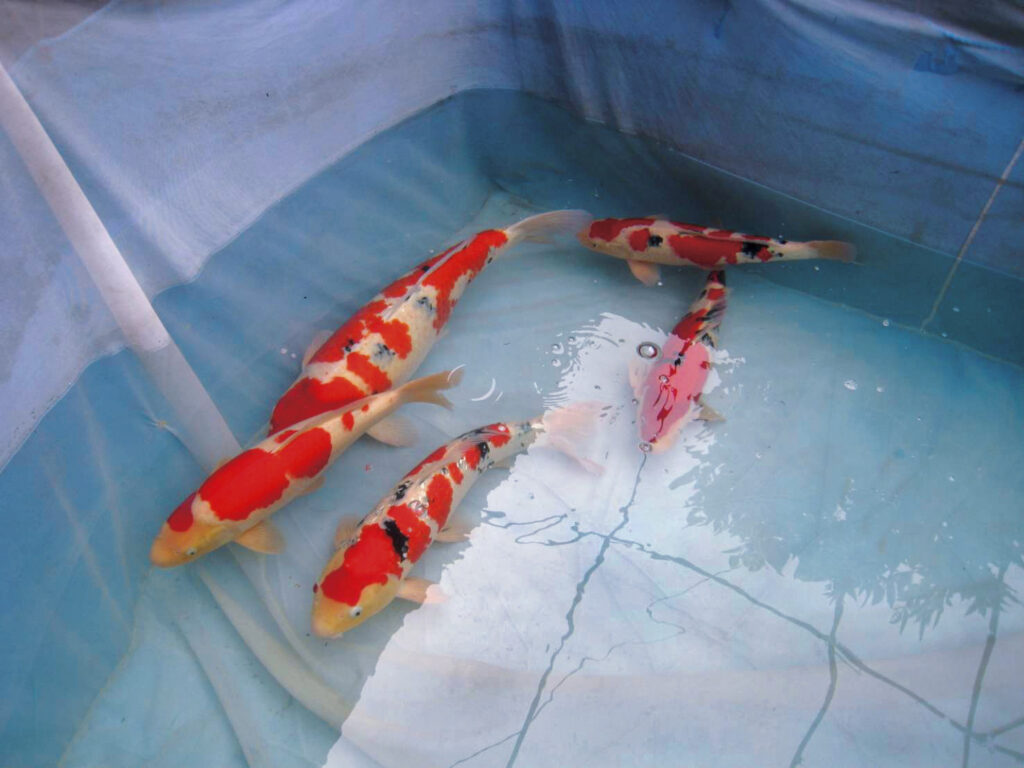
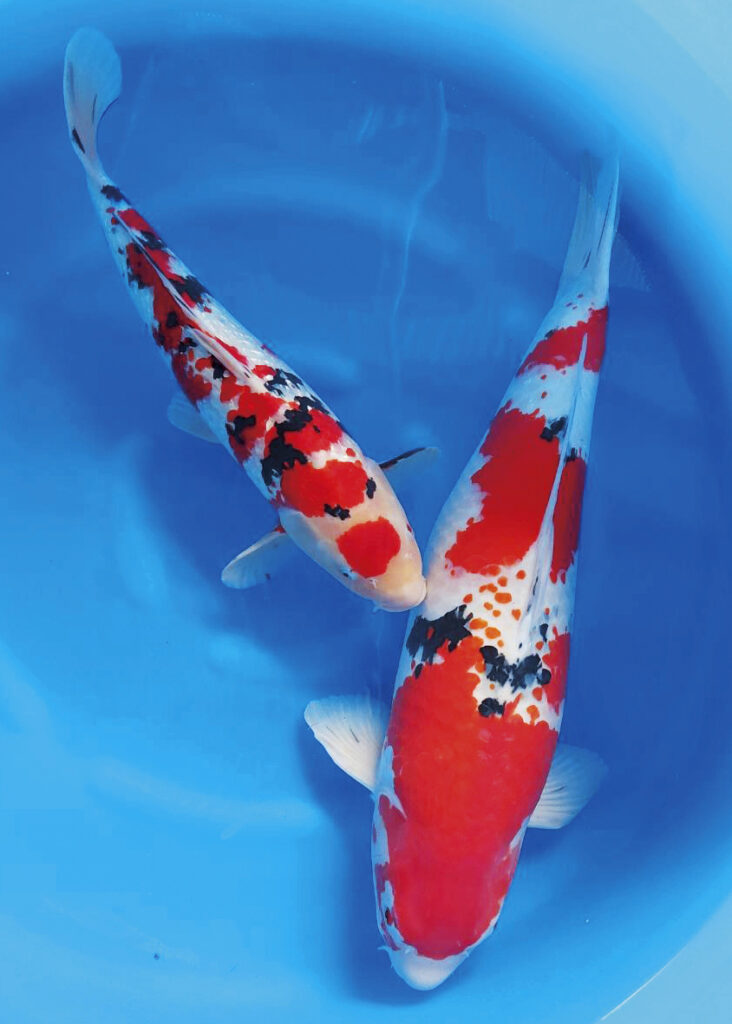
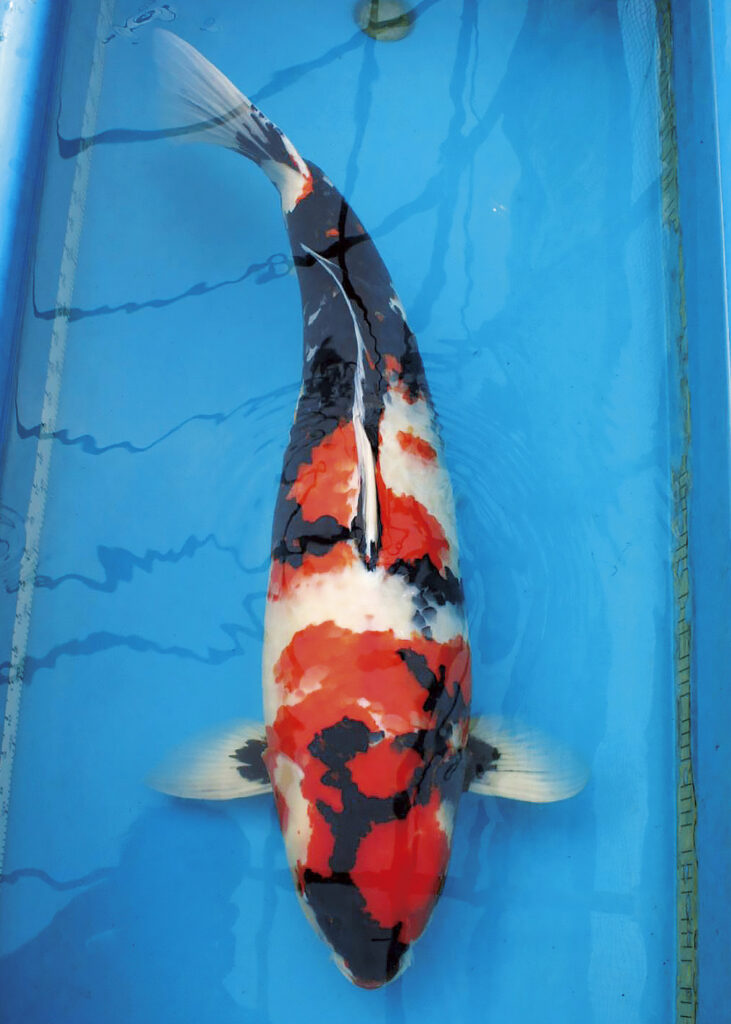
offspring of Kinpozan)
—Was the pairing one Taisho Sanshoku and the other a Ginrin Taisho Sanshoku?
Nobuhiro: That’s right. We often pair a female Taisho Sanshoku with a male Ginrin Taisho Sanshoku.
—With this pairing, both varieties can appear, right? Are you aiming to get the best of each?
Takaharu: Of course, the goal is to breed Ginrin, but there are also pairings where we aim to get both. For example, we sometimes pair a female Taisho Sanshoku with a male Ginrin Taisho Sanshoku and Taisho Sanshoku. That might be more common for us.
—How many of the six or seven Taisho Sanshoku spawning involved Ginrin Taisho Sanshoku?
Nobuhiro: We breed about three of them, I’d say. Lately, Ginrin Taisho Sanshoku have received good recognition, so we’ve increased their share a bit over a few years.
—The Ginrin Taisho Sanshoku won Baby Champion at the 39th Nishikigoi All Japan Young Koi Show (Photo 1), right? You’ve also won the Kokugyo Prize with Taisho Sanshoku and Kohaku and placed high with Kumonryu and Koromo.
Nobuhiro: We bred Koromo just once for fun (laughs). We happened to have a parent koi for it.
Takaharu: It was an old koi from Sakai Fish Farm. We bought it as a tosai and raised it, and it grew pretty big, so we thought, “Why not try breeding it once?” Ultimately, this was the only one we ended up with from that spawning.
—Was that the only time you bred it?
Takaharu: Never again (laughs). We did breed Kumonryu once or twice… A while back, Sakai Fish Farm had bred them, and we had a pretty large Kumonryu, which was over 90cm, so we used that. But with Kumonryu, that was the only one left (laughs).
—Aside from the Gosanke and Mujimono, do you only breed other varieties when good parent koi are available?Takaharu: That’s right. For varieties other than our main ones, we usually start them in the second round of spawning, so it also depends on how much space is available in the fry ponds. We might try breeding a few, and if the results are good, we’ll keep going, but even if we get one really nice koi, that alone isn’t enough to make it a viable business.
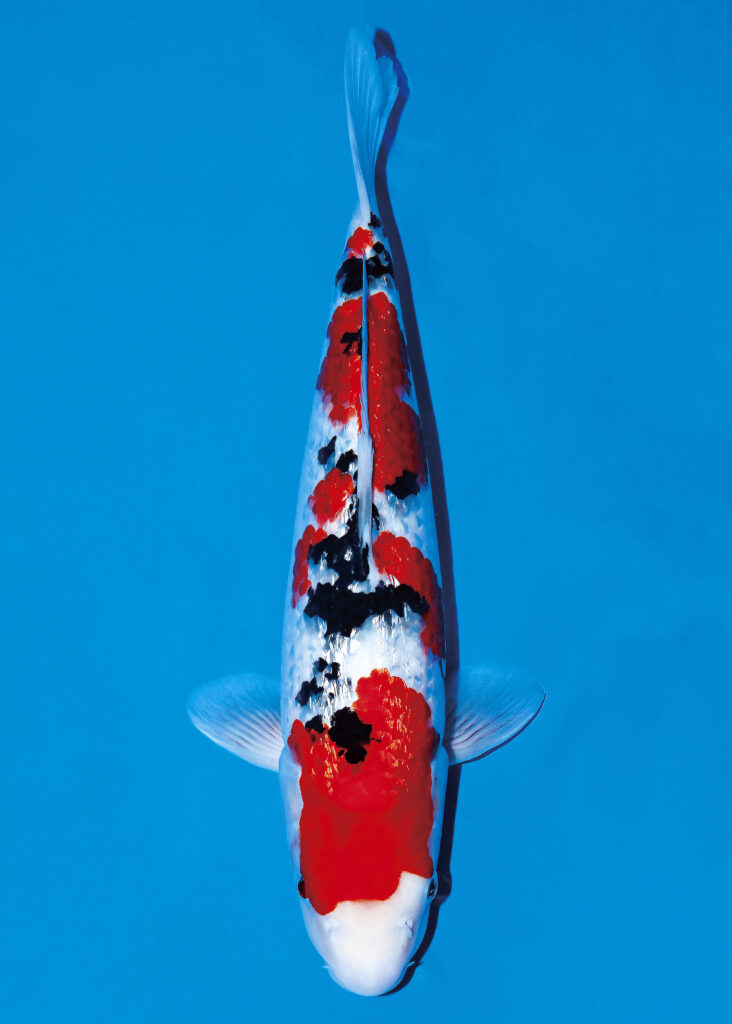
35bu Sakura Prize
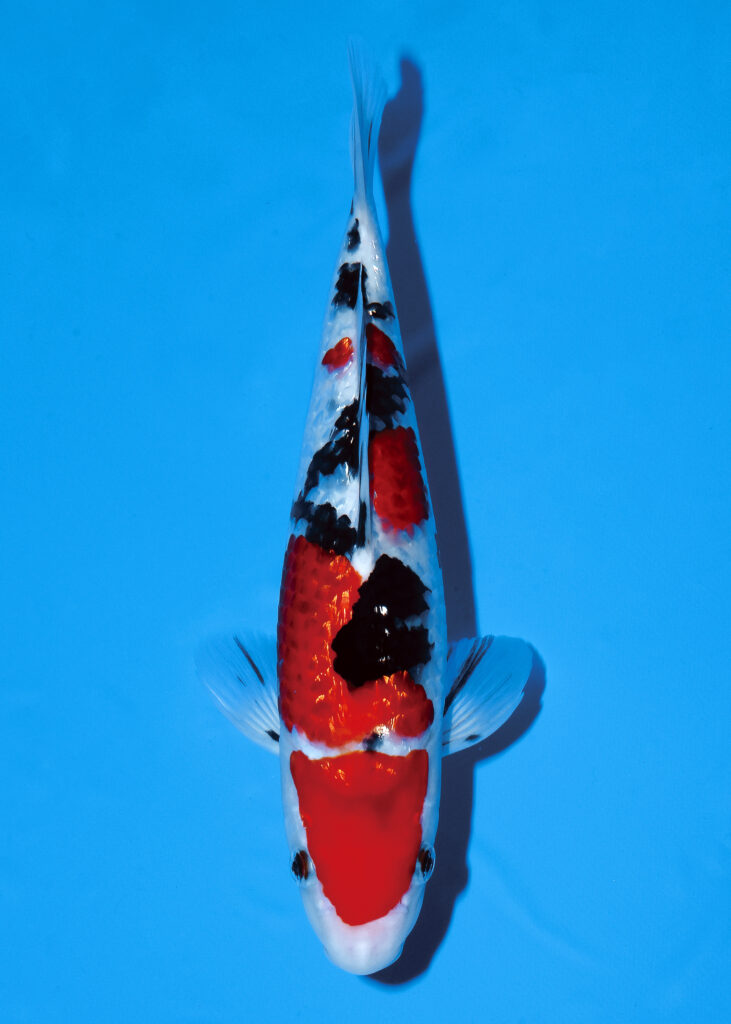
25bu Sakura Prize

Best in Varieties
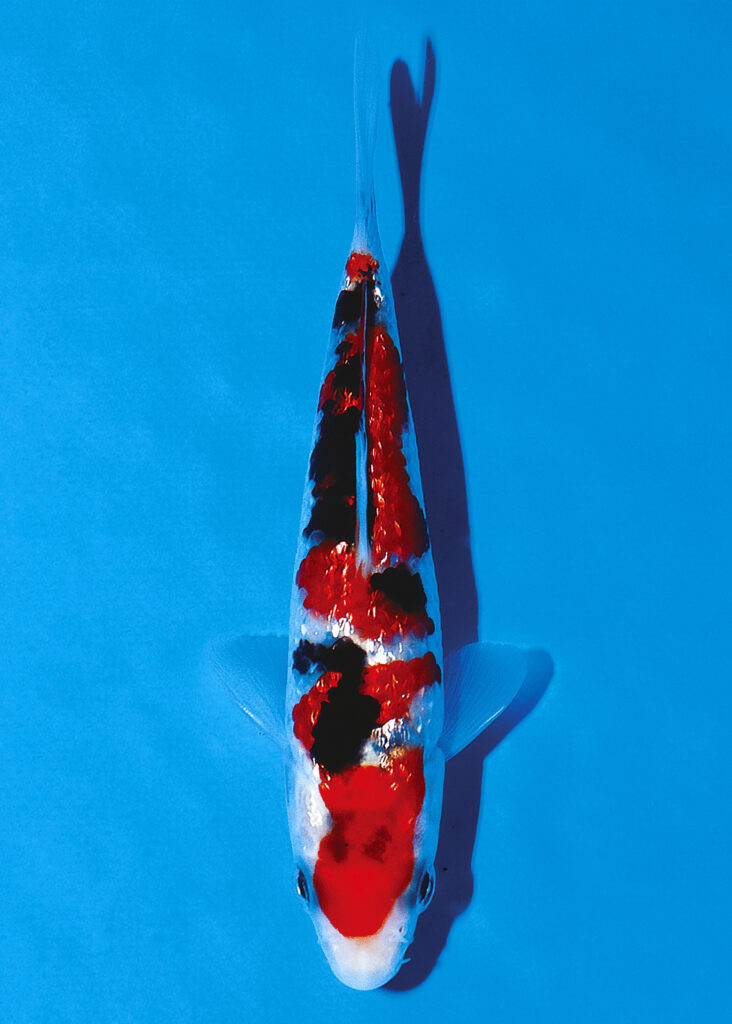
12bu Sakura Prize
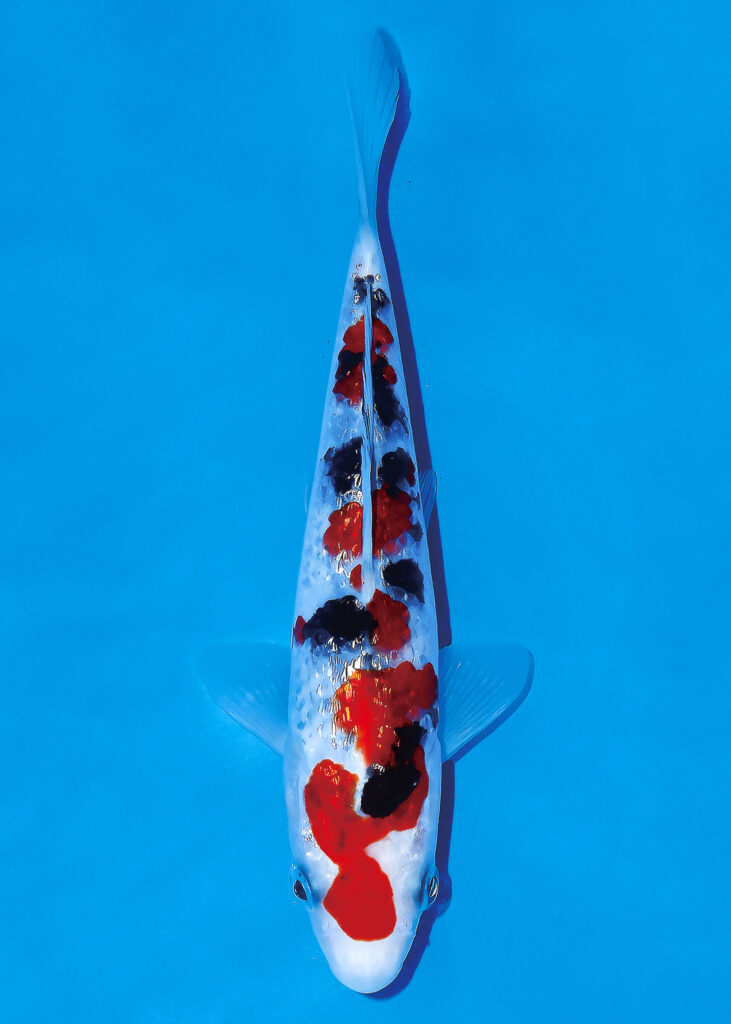
15bu Phoenix Prize
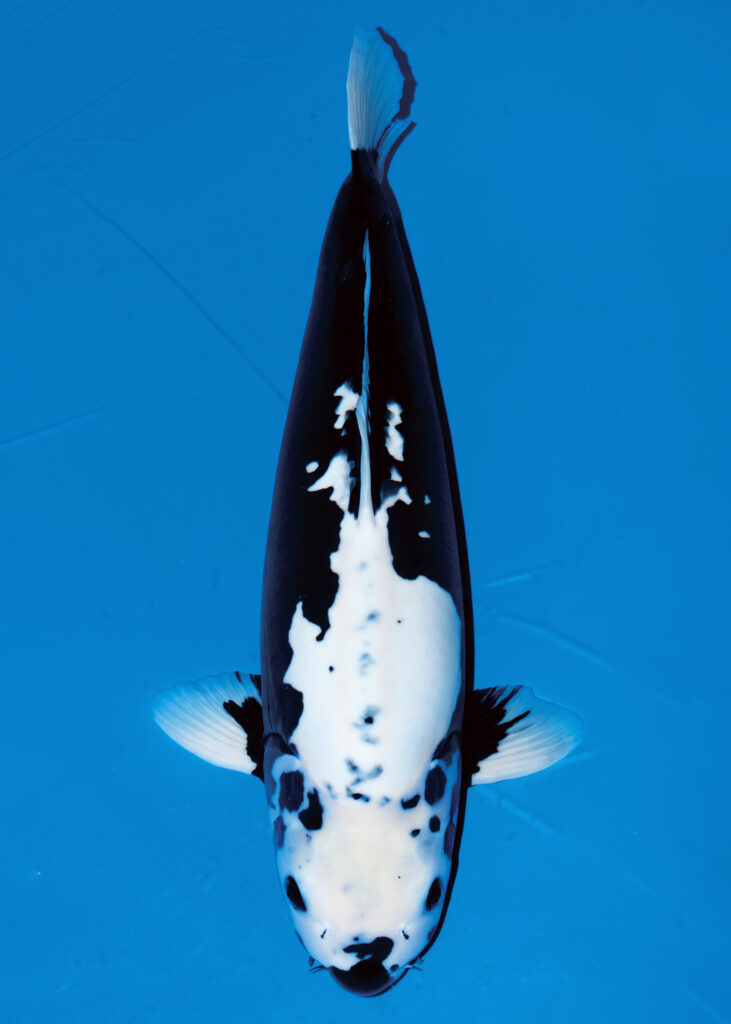
Best in Varieties
—Is the main focus of your breeding still on Taisho Sanshoku?
Nobuhiro: We’ve been breeding a lot of Taisho Sanshoku for many years. We also breed Kohaku, but getting the right body shape and pattern is complex, so we’ve had more spawnings of Taisho Sanshoku. Lately, we’ve also been breeding more Ginrin Taisho Sanshoku by chance.
—Are your Showa Sanshoku also from the Sakai bloodline?
Takaharu: These days, we get them from Migita Koi Farm. So, in that sense, they’re still from the Sakai bloodline.
Nobuhiro: It just so happened that one of Migita’s koi stayed around and became the foundation of our current bloodline.
—So, you’re using Sakai bloodlines as a base, and your koi descended from that line as parent stock?
Takaharu: Yes. We might use more of our males, but it depends. We sometimes cross our females with a male from the Sakai bloodline as well. These days, there are so many different lines within it that we can’t even keep track of them all, so we don’t go as far as to say, “We want to use this specific line.” We just tried using them, and since it worked out well, we think this line might be good, but it’s just a gut feeling.

